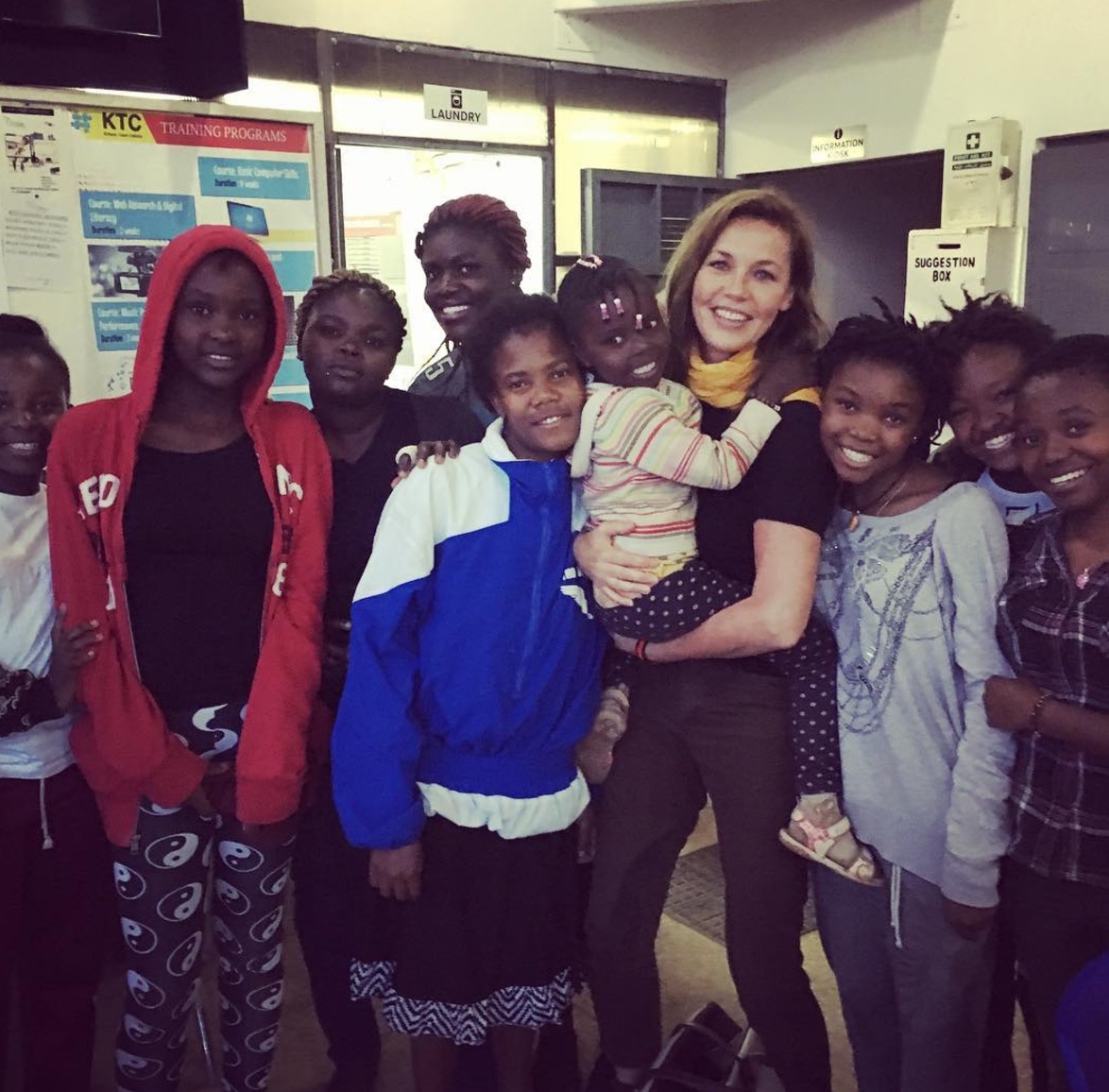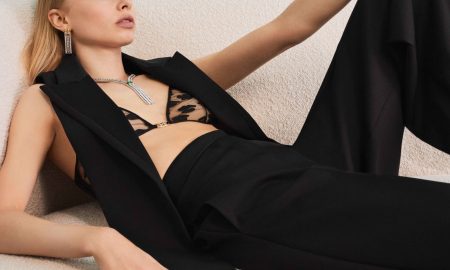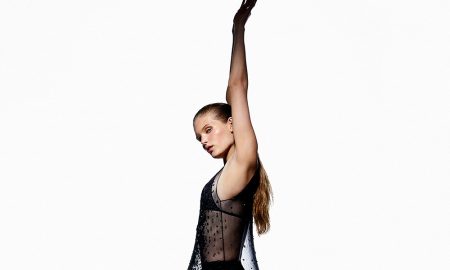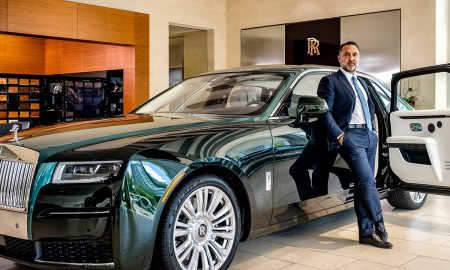
Photo Credit: Brian Bowen Smith
In real life, actor and Marin County resident Connie Nielsen is a mother of four boys. However, in one of this summer’s most anticipated blockbusters, Nielsen plays the mother of Diana Prince, better known as the most iconic female superhero of all time, Wonder Woman. In the film of the same name, directed by Patty Jenkins and starring Gal Gadot, Robin Wright, and Chris Pine, Nielsen portrays Hippolyta, Queen of the Amazons. The character is fierce, yet loving, a mentor and leader who is well-respected by the community in which she resides. The same could be said of Nielsen, who is strong, yet soft-spoken, an advocate and storyteller who is admired both in Hollywood and the Bay Area. Nielsen credits “stubbornness” for her longevity as an actor—she’s been making films for the past 30 years—but we think it’s her commitment to selecting quality projects that has her standing the test of time. “I always look for stories that really try to tell the world that I see, a world that values and is full, in fact, of stories that are important.” Nielsen confides on a chilly Friday morning. “If I can at all help in telling those stories in my small way, I’m just an actor, then I want to be a part of that.”
The tale that Nielsen is a part of come June 2 is one of ultimate girl power. It is the first superhero film with a female protagonist and female director. It’s the origin story of Wonder Woman and Nielsen beat out Nicole Kidman for the role of Hippolyta. “Patty and I met in London, and we just hit it off from the get-go. We couldn’t stop talking. What was supposed to be a one-hour meeting turned into a two-and-a-half-hour lunch and we just really got each other,” Nielsen says of her first meeting with the director. “I really saw what she was trying to do. She’s trying to do a new paradigm for women and this genre of action film. I was delighted hearing her vision from the beginning and couldn’t wait to get started with the character.”
Nielsen jumped wholeheartedly into transforming herself into the a warrior queen. She worked out six hours every day and ended up being in the best shape of her life. “I had to do two hours of horseback riding, two hours of very strenuous weight training and conditioning, and two hours of sword fighting,” she says of the rigorous regime. “The sword fighting was amazing. It was astounding. I loved every second of it. I really love working out anyway. It’s something I really enjoy, what it does to my body and my mind. Getting this whole experience with horses as well was incredible.”
 Photo Credit: Brian Bowen Smith
Photo Credit: Brian Bowen Smith
She read Adrienne Mayor’s book The Amazons: Lives and Legends of Warrior Women Across the Ancient World to familiarize herself with the realities of women warriors. “It was one of the most interesting books I’ve read in a long time,” Nielsen says. “It was wonderful to discover all this historical evidence of war women and also hunter women. Women who were not fitting into this stereotype we’ve made historically about women.” She also spent a lot of time introspectively thinking about how she wanted to play the part. “I used what I learned in Mayor’s book as a rallying cry for how I approached Hippolyta. And then, of course, what is a leader who is elected by her peers every year and has been doing this for a thousand years? That too was interesting to think about.”
To make her portrayal of Hippolyta as realistic as possible Nielsen did all of her own stunts. “I love doing stunts. I’m dedicated to stunts, in fact. I really find that that brings me even closer to a physical truth about my character that I enjoy being a part of. I love doing that stuff.” The scariest part of shooting involved Nielsen sitting on a white stallion at the edge of a cliff in Italy for an entire day. “Riding up to that cliff and having my horse, which was a stallion and it’s a very strong personality horse, stay there at the edge of a cliff, I felt petrified. And then look not petrified, and instead actually look regal. I’m wearing double corsets, long boots, spurs, and swords. You name it, I had it on my horse. I was just hoping that none of it would be poking the horse, standing right there at the edge.” All of the studio scenes were shot in London, but the mythical island of Themyscira was mostly filmed in Italy. “They were some of the most amazing vistas I’ve ever seen where we filmed in many parts of Italy. That was just magic, really magic. The beaches, the old towns, the castles, the fortresses we were in were so unbelievably beautiful.”
Another magical aspect of shooting Wonder Woman? The camaraderie that formed on set. “All these women are amazing. I made so many friendships. A lot of the cast were professional athletes. And there, you just have to marvel at the sheer capacity of these women. Unbelievable women with vision for what they want to obtain as athletes. I have great, great respect for that. And then wonderful actresses as well, just beautiful, beautiful people. Gal is the most genuine and beautiful person. She’s a mother, a wife, she’s got all these ideas for films that she wants to do, stories she wants to tell. And then just this wonderful personality. You can tell her parents did a good job there.”
While she has nothing but love for her costars, Nielsen can be critical of the Hollywood machine. She brings up a movie that she brought her ten-year old son, Bryce Thadeus Ulrich-Nielsen, and nephew to see recently where the main character was a white man. “He was better, and he was, of course, the one that this oracle said was meant to be the leader and the Chinese and the Hispanic guy and the black guy, they were obviously not the leader, and neither was the Hispanic girl or the white girl. I felt uncomfortable showing that story to my son and my nephew because I felt that’s giving them the wrong idea here. That’s just perpetuating a false narrative.” She uses this unnamed film as an example of the type of project she would choose not to be a part of. Instead she searches for captivating stories. “What really drives me, what really lights me up, it’s the stories, and what stories mean to us. Things that before we even understood science, and before we even understood the elements around us. Before science, we were trying to make sense of it through stories. There is that thing where we’re sitting down in the movie theater, and to me, that’s not different at all from sitting around the fire oodles of years ago. We listened to the storyteller as the storyteller went from community to community.”
Another thing she finds fault with in the entertainment industry? Its portrayal of women. Does she think the roles for older females in Hollywood are becoming more diverse? “No, they keep saying so, and I still see loads and loads of pictures where it’s seven men on the poster, and then one ridiculously young girl. I just think we are so far from it still. The reality is that we are still portraying women in relation to men, not women in relation to themselves.” Nielsen says she is driven by her family, and her internal life revolves around exploring the world through art, literature, science, and psychology. “That’s what defines me as a human being, but I don’t see characters like that on TV, except for maybe The Good Wife or shows like that. It’s rare. There is this world that when I actually turn on that box, I’m not sure that I quite know what to make of it.”
What is incredible about Nielsen is her ability to tell stories in seven different languages. The polyglot was born in Denmark and moved to Paris when she was 18 to work as an actress and model. She had a successful career in Italy before breaking into American cinema with the role of Lucilla in Gladiator. “I understand that for an American, it seems almost crazy, but it’s normal for me,” she says of her way with languages. “It isn’t something that I spend a lot of time thinking about or curating at all. It’s just one of those things that life worked out that way. I got to learn a lot of languages.” She’s done films in Italian, French, German, and of course English.
 Photo Credit: Brian Bowen Smith
Photo Credit: Brian Bowen Smith
Nielsen is so clear-headed and open when she speaks that it’s surprising to hear her say that she’s rather shy. Sharing her life with fans through social media has become a test for her to be more open. “It’s actually a personal thing for me. Doing social media is a way of not giving in to this inclination to hiding. But instead, I’m teaching myself to feel comfortable about being open. On the other hand, I don’t want to curate it with gorgeous pictures of myself or selfies where I send kisses to people. I’m still exploring this thing, and I don’t quite know what to make of it. But I just try to show what I see.” Browse her Instagram page and it does feel exceptionally uncurated. Scenes from a hike in Muir Woods are mixed with shots of her on set or posing with family.
In one recent image, Nielsen is on a stage accepting an award from the Nelson Mandela Foundation. When she’s not acting or raising her family, she’s running the Human Needs Project, a nonprofit she formed in 2010. “I went to shoot a film in Africa. It was in this slum, and I got to meet a whole bunch of the crew and cast who actually lived in this slum. I’m used to getting to know people in films around the world, as an actor. And getting to know people from a slum was a new thing. There was no longer any way that I could avert my gaze from them or not see past this mask of poverty. Once you see past that, the look of poverty, and you just see the human beings condemned to live in it. That’s a very, very transformative experience.”

When her new friends asked her to build a well, she immediately said yes without having any knowledge of the subject. She quickly realized that what the people of Kibera, Nairobi needed was infrastructure—both physical and social. Thus, the Human Needs Project was born. Its goal is to build sustainable community centers that provide slums with clean water, toilets and showers, adult education, internet access, and skills training. The first town center opened in Kibera in July 2014 and since then more than 486,000 services have been purchased and 325,000 people have used the center’s facilities. “Human Needs Project is really about how to come up with a different approach to helping, really focusing on the dignity of people living in communities you are not a part of, and how to approach these communities with help, but more look at it as an investment and a collaboration with these communities rather than, ‘Here comes the white savior!’ And really create a space of exchange of ideas, of knowledge, of culture. That’s what we’ve done at the Kibera Town Center. We have impacted a lot of people’s lives with these services. Now, what we’re looking at is how do we repeat this? How do we scale up?” Nielsen says the improvements are inspiring and that they “really do change people’s lives in a very specific way.”
Her experiences in Africa have changed her life in a very specific way. Along with the nonprofit, Nielsen also launched Road to Freedom Scholarship, a program that provides slum children with education and empowerment. Through this charity work, she has become more focused on the bigger picture. While telling stories is her passion, helping the people in Africa she’s connected with on a personal level is her current mission. She succeeds at both. As one little girl in the Road to Freedom Scholarship program puts it in a handwritten letter on the organization’s website, “Connie you are not only a movie star, but a Guardian Angel.” Movie star and guardian angel? Sounds like a modern day wonder woman.

























